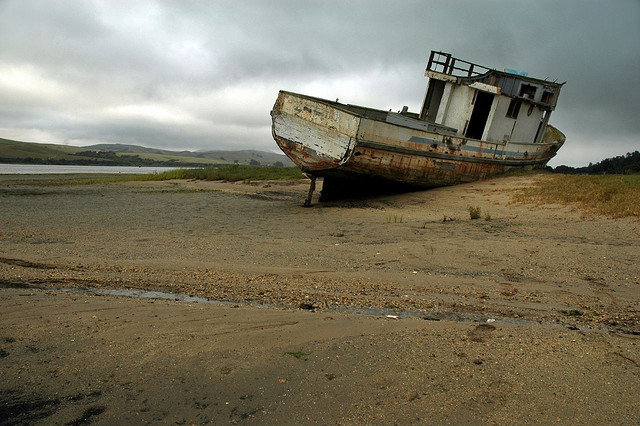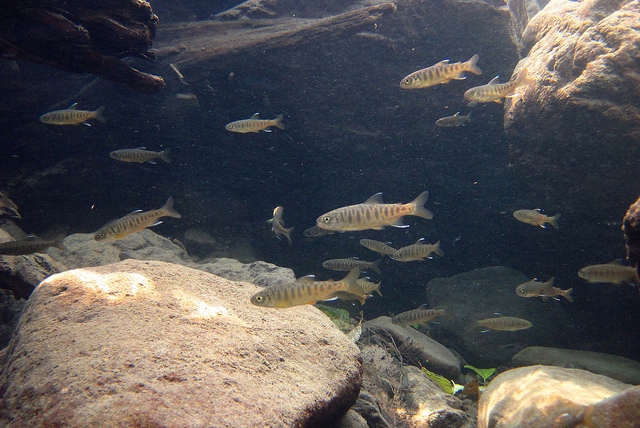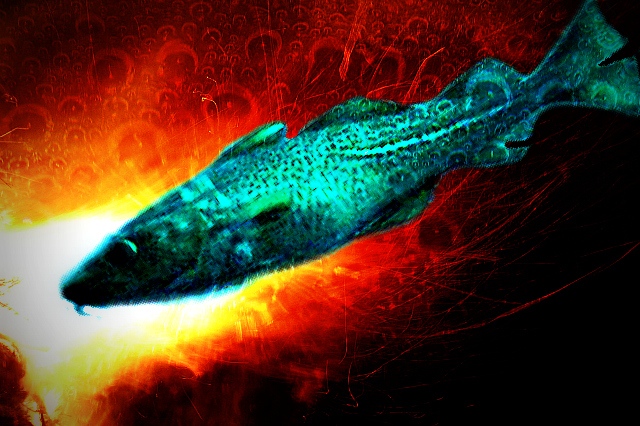 Cod: Derek Keats. Flame: designshard. Bubbles: Velo Steve. All via Flickr. Mashup: Julia Whitty.
Cod: Derek Keats. Flame: designshard. Bubbles: Velo Steve. All via Flickr. Mashup: Julia Whitty.
Sea surface temperatures (SSTs) off the East Coast from North Carolina to the Gulf of Maine were the hottest ever recorded for the first six months of 2012, according to NOAA’s latest Ecosystem Advisory. Above-average temperatures were found everywhere: from the sea surface to the ocean bottom and out beyond the Gulf Stream.
The area is known as the Northeast Shelf Large Marine Ecosystem. Parts of it were declared a fisheries disaster last week (I posted about that here: Fisheries Declared Disasters on Four Coasts). This was due to the fact that stocks of cod, yellowtail flounder, and other groundfish are not rebuilding even though most fishers have adhered to tough quotas.
The problem lies in the warming waters. The super warm SSTs of 2012 jumpstarted an early and intense spring plankton bloom—which began in some places as early as February—and lasted longer than average. This ricocheted through the marine foodweb from the smallest creatures to the largest marine mammals like whales.
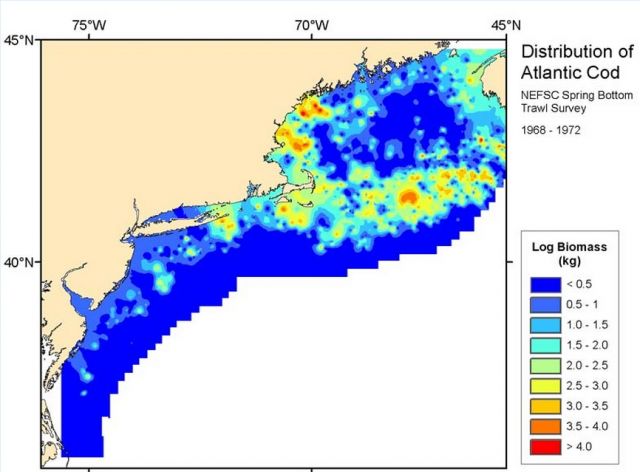
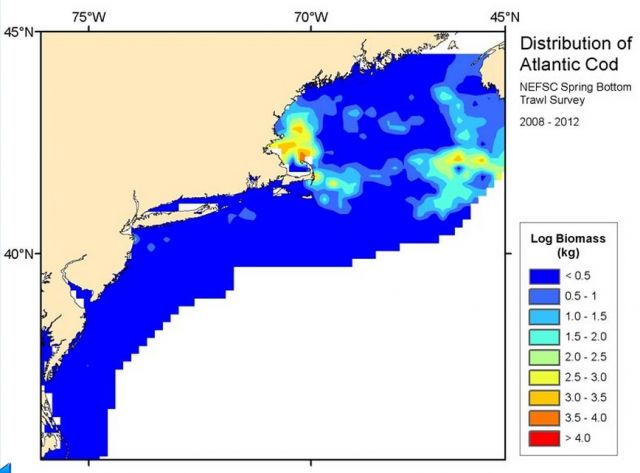 NOAA It forced the ongoing trend whereby Atlantic cod are shifting northeastward from their historic distribution center. That’s consistent with a response to ecosystem warming—as you can see that in the two maps above. The top map shows cod distribution between 1968-1972. The bottom map shows cod distribution between 2008-2012. (All other four-year distribution maps for the interim here.)
NOAA It forced the ongoing trend whereby Atlantic cod are shifting northeastward from their historic distribution center. That’s consistent with a response to ecosystem warming—as you can see that in the two maps above. The top map shows cod distribution between 1968-1972. The bottom map shows cod distribution between 2008-2012. (All other four-year distribution maps for the interim here.)
Kevin Friedland, a scientist in NOAA’s Northeast Fisheries Science Center Assessment Program (NEFSC), says the average sea surface temperature exceeded 51°F (10.5°C) during the first half of 2012. Whereas the average SST during this period over the past three decades has typically been below 48°F (9°C). Noteworthy from the Ecosystem Advisory:
- SST data are based on satellite remote-sensing data and long-term shipboard measurements, plus historical SST conditions based on shipboard measurements dating back to 1854.
- Some nearshore locations like Delaware and Chesapeake Bays in the Middle Atlantic Bight region saw SSTs more than 11°F (6°C) above historical average at the surface and more than 9°F (5°C) above average at the bottom.
- Deeper offshore waters to the north saw bottom water temperatures 2°F (1°C) warmer in the eastern Gulf of Maine and more than 3.6°F (2°C) warmer in the western Gulf of Maine.
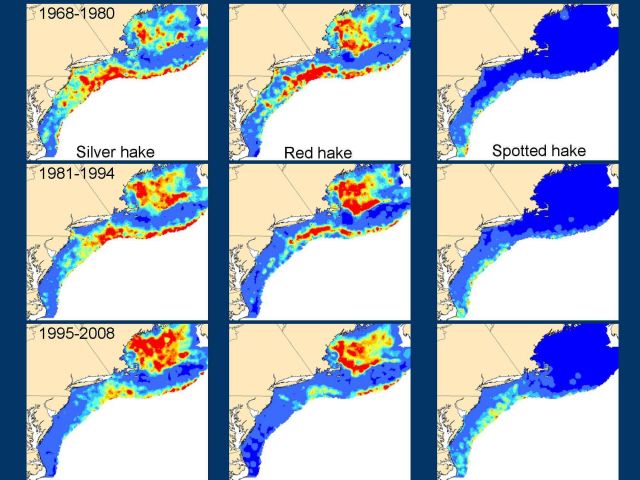 Distribution of silver hake, red hake, and spotted hake 1968-2008: Janet Nye | NOAA | NEFSC NEFSC Ecosystem Assessment Program
Distribution of silver hake, red hake, and spotted hake 1968-2008: Janet Nye | NOAA | NEFSC NEFSC Ecosystem Assessment Program
Warming ocean temperatures have changed the distribution of other fish stocks besides cod, as reported by the NEFSC in a 2009 study published in Marine Ecology Progress Series. About half the 36 fish stocks studied in the Northwest Atlantic Ocean—many commercially valuable species—have been shifting northward for the past four decades.
Some, like the three hake species shown in the maps above, have shifted themselves completely out of US waters.
